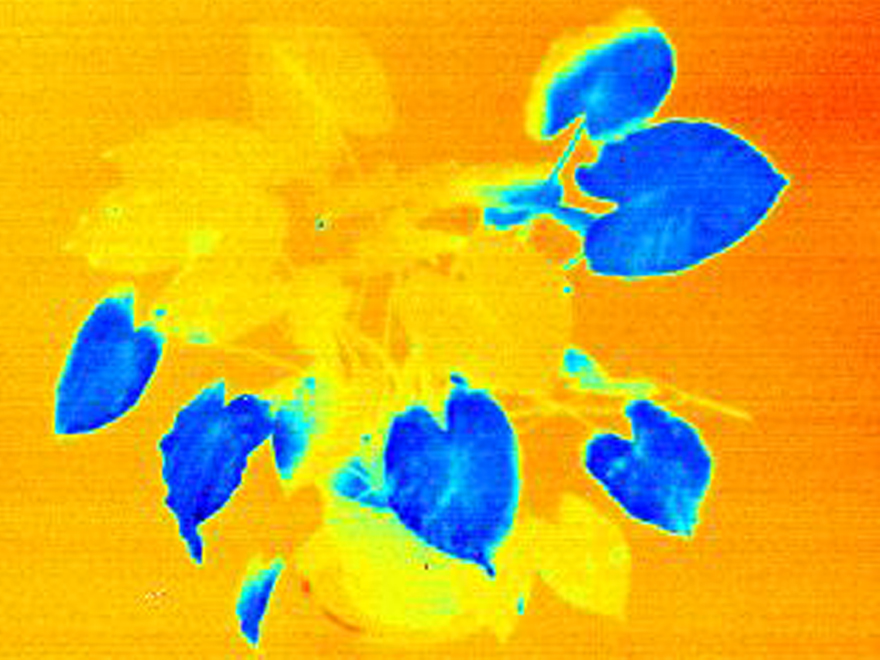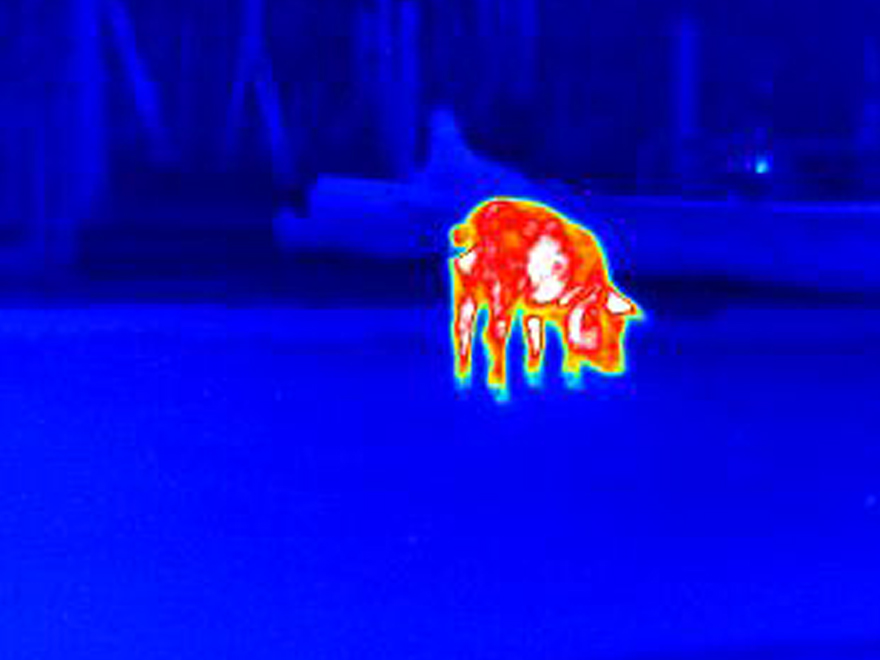Uncooled IR imagers can cover a wide range of agricultural applications. They are used in agriculture as well as in livestock farming. Using uncooled infrared sensors in arable farming makes it possible to determine the condition of plants. The wetting of plants with liquids, e.g. water, fertilizers or pesticides, can be observed and determined qualitatively. In this way, the use of pesticides in agriculture can be kept to a minimum, since in extreme cases the distribution can be carried out and monitored with leaf precision. In addition, it is also possible to supply the plants with nutrients according to their needs. Since IR imagers do not require external lighting, they can be used both stationary, as in greenhouses, and mobile on the field.
In the field, however, there are other applications for uncooled infrared sensors in agriculture. For example, animals in front of the harvester can be detected and scared away in time using IR imagers. The distribution of seeds in the soil can also be determined using uncooled infrared sensors.
In addition to this area of agriculture, the thermal signal from uncooled infrared sensors is also of great interest in livestock farming. With uncooled infrared sensors, for example, it is possible to detect sick animals in a herd at an early stage or to make location-induced anomalies (e.g. inflections) visible and individually treatable. The targeted use of antibiotics can prevent mass infection or the treatment of healthy animals. Simplified animal counting is also possible, especially for large herds. In pigs, for example, stress expresses itself through a change in temperature, which can be made visible by uncooled infrared sensors. For example, the condition of piglets after birth can be checked contactless and intervened if necessary. The stress of the animals can also be detected by means of uncooled infrared sensors during transport or before the slaughter of pigs. With suitable image evaluation it is also possible to track animals and analyses their behavior in the herd.
For all agricultural applications, uncooled infrared sensors with good thermal resolution (low NETD value) are required.

